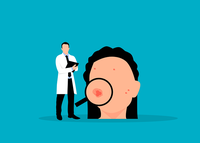
Lasers - gone are the days of the surgeon’s knife or waxing that unwanted hair.
Whether you’re looking to remove unwanted hair, reduce wrinkles, zap sun damage or simply tone skin, you can now treat a range of skin problems and conditions the hi-tech way using laser beauty treatments.
One of the biggest recent advancements in skin treatment lies in the field of laser technology. Once harsh and invasive, modern lasers are now able to treat skin complaints ranging from wrinkles & fine lines through to thread veins, hyperpigmentation and reduced skin colour, with minimal pain and short recovery periods. Hair removal is also made easier and is often permanent.
Kim Kardashian West may have great genes, but she also has a great dermatologist. She has admitted in a recent Hello magazine interview to using laser treatments to keep her skin looking as it does, but there are quite a few to choose from — what’s the difference between a Fraxel and an IPL (Intense Pulse Light)?
Fraxel Lasers
Fraxel, the laser’s brand name, is a fractionated laser (there are erbium and CO2 variants) which means it produces a single wavelength of collumated light frequency. It is used to treat a very selective portion of skin leaving the surrounding skin intact which helps to promote healing. Fraxel is designed to address wrinkles, achieve skin tightening, and dyschromias and it can help with sun damage, fine lines and dullness.
LIGHT THERAPY
Gaining popularity over the past few years, light therapy uses pulses of light on the skin to repair damaged cells and promote collagen production. Intense pulse light (IPL) is a technology that utilizes a broad spectrum of scattered light to address sun spots, broken blood vessels, unwanted hair and can promote some degree of skin tighten

EXPRESS LED REJUVENATION
The key element of this treatment is 11 minutes under LED light — the same type of energy that powers Christmas tree lights and alarm clock displays. With the correct power and at the right wavelength, LED light stimulates skin cells to kickstart production of collagen, elastin and hyaluronic acid, the vital components of youthful, bouncy, wrinkle-free skin.
A few more options
4D LASER
The 4D facial involves one laser (Dual Yellow) to reduce discolouration and uneven pigmentation, another to stimulate the growth of new collagen and yet another to tighten the skin.
PICOWAY RESOLVE
A picosecond is a trillionth of a second, which is how long each pulse from this revolutionary laser lasts. Such rapid delivery means that the narrow rays of energy penetrate the skin without creating noticeable damage on the surface.
It also means that the treatment — designed to tighten and re-surface the skin — should be pain free, with no need for the numbing cream that other laser procedures need. It should also require no downtime, or at least that’s the claim.
Even men are turning to the laser

Plucking, shaving, sugaring and waxing - it’s safe to say women go to great lengths to stay smooth and hair-free.
But now men everywhere are taking more of an interest in their appearance and it seems they too are worrying about how best to get rid of their unwanted hair. The IPL/laser is becoming a really popular option as the effect is long term and often permanent in many cases, therefore requiring no future maintenance – which is what men want in general – low (or no) maintenance! The treatment involves targeting the hairs with pulses of heat from a laser - the heat is attracted to the pigmentation in the hair follicle, damaging it until the hair stops growing.
Word of warning - Take a good look #takeagoodlook
Be sure any laser or pulsed light treatment is performed by a well-trained physician — an untrained provider can cause serious or - even worse - permanent damage.
In 2013, Marie Claire magazine started the Take A Good Look Campaign which aims to empower and inform women about cosmetic beauty treatments. As part of their campaign they want better training, a body to be set up that women can turn to if things go wrong as well as a ban on manipulative advertising that preys on vulnerable women.
Read this very informative article by Marie Claire - Laser Treatments: Everything You Ne
